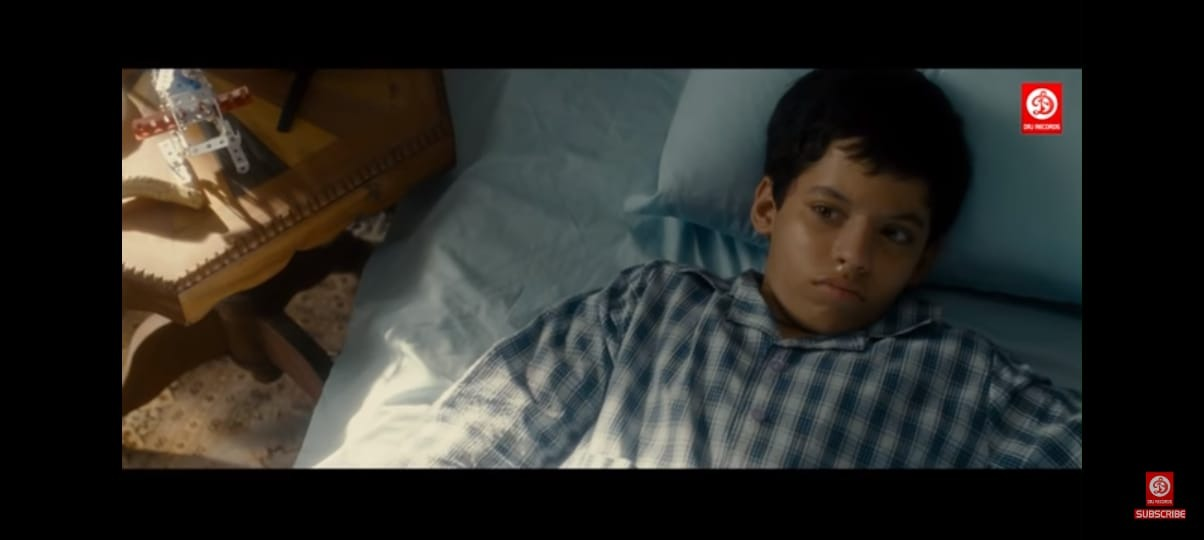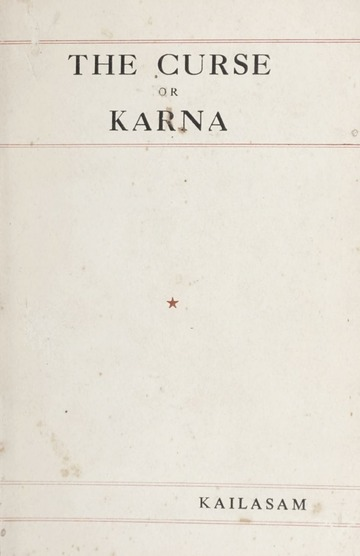This blog is about Thinking Activity on Midnight's Children written by Rushdie. This task is assigned by Prof. Dr. Dilip Barad sir, Head of the English Department of Maharaja Krishnakumarsinhji Bhavnagar University (MKBU). As a part of the syllabus, students of English department are learning the paper called Cultural Studies.
About The Novel
Midnight’s children(novel), is story of Grandfather to son Saleem and another boy Shiva. With the born of independent India at mid night some children were also born and with their grows symbolically growing of India is presented. Movie is like collage of so any things. Many stories goes together with various symbols, hidden meanings and mechanics of the movie. Midnight’s children is like National History in Fictional way. Deepa Mehta try to make it Dreamy and Dramatic. Salman Rushdie is himself screenplay writer, though it is not as good as novel.
Quote
About Author
Sir Ahmed Salman Rushdie FRSL (born 19 June 1947) is an Indian-born British-American novelist and essayist. His work, combining magical realism with historical fiction, is primarily concerned with the many connections, disruptions, and migrations between Eastern and Western civilizations, with much of his fiction being set on the Indian subcontinent.His second novel, Midnight's Children (1981), won the Booker Prize in 1981 and was deemed to be "the best novel of all winners" on two occasions, marking the 25th and the 40th anniversary of the prize. His fourth novel, The Satanic Verses (1988), was the subject of a major controversy, provoking protests from Muslims in several countries. Death threats were made against him, including a fatwā calling for his assassination issued by Ayatollah Ruhollah Khomeini, the Supreme Leader of Iran, on 14 February 1989. The British government put Rushdie under police protection.
In 1983, Rushdie was elected a fellow of the Royal Society of Literature, the UK's senior literary organisation. He was appointed Commandeur de l'Ordre des Arts et des Letters of France in January 1999.In June 2007, Queen Elizabeth II knighted him for his services to literature. In 2008, The Times ranked him thirteenth on its list of the 50 greatest British writers since 1945.
Since 2000, Rushdie has lived in the United States. He was named Distinguished Writer in Residence at the Arthur L. Carter Journalism Institute of New York University in 2015. Earlier, he taught at Emory University. He was elected to the American Academy of Arts and Letters. In 2012, he published Joseph Anton: A Memoir, an account of his life in the wake of the controversy over The Satanic Verses.
1. Narrative technique (changes made in film adaptation - for eg. absence of Padma, the Nati, the listener, the commenter - What is your interpretation?)
👉In the movie " Midnight's Children" so many changes had been made by the director. so many character are not included in a movie and novel also. In original text the story is told by protagonist and the story listened to by Padma. In movie Padma is absence. Salman Rushdie a use of magic realism and Independence India politic situation Indira Gandhi time. In film adaptation this method is changed and here Saleem tells the story but the audience plays the role of nati.
Russian doll and chinse box to use a metaphor Rushdie in novel.
Indian oral Narrations
Panchatantra : In Panchatantra tells animals (fable) story's to tells by Vishnu Sharma King Sudarshan three child son Bahushakti, Ugrushakti and Shakti .
Every tale in the Panchatantra teaches us an important moral lesson. The Panchatantra is a collection of five volumes which consist of a total of 87 stories.
Shihasan batisi : Singhasan Battisi is a collection of Indian folk tales. The title literally means "thirty-two (tales) of the throne". In the frame story, the 11th century king Bhoja discovers the throne of the legendary ancient king Vikramaditya (also known as Bikramjit). The throne has 32 statues, who are actually apsaras that had been turned into stone due to a curse. Each of the apsaras tells Bhoja a story about the life and adventures of Vikramaditya, in order to convince him that he is not deserving of Vikramaditya's throne. Vikramaditya (IAST: Vikramāditya) was a legendary king[1][2][3] who has been featured in hundreds of traditional stories including those in Baital Pachisi and Singhasan Battisi. Many describe him as ruler with his capital at Ujjain (Pataliputra or Pratishthana in a few stories). The term Vikramaditya is also used as a title by several Hindu monarchs.
Kathasartasagar : In story within a story and complier was somadeva ,Baital Pachisi , Arabin night is Alif- lela story a one thousand Night, Shahrzad or shahryar, Indian two epics Valmiki's Ramayan, Vedvyasa a narrator and Ganesh is writer of Mahabharata and Girish Karnad's Hayavadana.
Western Postmodernist Devices Eastern Narratological Devices
Unreliable Narrator Sutra Dhar- Nati
Social realism Magical realism / Fantasy
Historical events Counter historiography
Framed Narration Framed story telling
Mythical technique for the
sake of universalization Parodic treatment
2. Characters (how many included, how many left out - Why? What is your interpretation?)
Characters in Novel
Here are the list of character from the novel who didn't appear in the film.
Padma
Sonny Ibrahim
Commander Sabarmati
Lila Sabarmati
Homy Carrack
Alice Pereira
Nalikar Women
Ramram Sheth
Characteres in Movie
Satya Bhabha as Saleem Sinai
Shreya Saran as Parvati-the-witch
Siddharth Narayan as Shiva
Darsheel Safary as Saleem Sinai
Anupam Kher as Ghani
Shabana Azmi as Naseem
Neha Mahajan as Young Naseem
Seema Biswas as Mary
Charles Dance as William Methwold
Samrat Chakrabarti as Wee Willie Winkie
Rajat Kapoor as Aadam Aziz
Soha Ali Khan as Jamila
Rahul Bose as Zulfikar
Anita Majumdar as Emerald
Shahana Goswami as Amina
Chandan Roy Sanyal as Joseph D'Costa
Ronit Roy as Ahmed Sinai
Kulbhushan Kharbanda as Picture Singh
Shikha Talsania as Alia
Zaib Shaikh as Nadir Khan
Sarita Choudhury as Indira Gandhi
Vinay Pathak as Hardy
Kapila Jeyawardena as Governor
Ranvir Shorey as Laurel
Suresh Menon as Field Marshal
G.R Perera as Astrologer
Rajesh Khera
Salman Rushdie, narrator
3. Themes and Symbols (if film adaptation able to capture themes and symbols?)
Symbols
The Perforated Sheet
In the movie we have seen two times The perforated sheet through which Aadam Aziz falls in love with his future wife performs several different symbolic functions throughout the novel. Unable to see his future wife as a whole, Aadam falls in love with her in pieces. As a result, their love never has a cohesive unit that holds them together. The second use we see while the performance of singing by Jamila.
The Silver Spittoon

Pickles
Pickles are repeatedly mentioned in Midnight’s Children, and while they are often viewed as a phallic symbol, they are generally representative of the power of preservation within Rushdie’s novel. Saleem is the manager of a pickle factory, and he preserves pickles and chutneys each day. He also attempts to preserve his own life story like the pickles in his factory. Saleem largely manages to preserve his life through storytelling, offering a bit of immortality to a dying man, and he also labels and stores each chapter he writes in a pickle jar, so that they may be read later, by his son for example. This connection between pickles and the preservation of stories endures until the very end of the book, when Saleem ceremoniously labels his very last pickle jar as a way of closing out his story and his life as a whole.
Knees and Nose

Saleem Sinai’s large, bulbous nose is a symbol of his power as the leader of the Midnight Children’s Conference, which is comprised of all children born on the moment of India’s independence from British rule. His nose makes his power of telepathy possible, and this is how he communicates with the other children of midnight (who all have varied powers of their own). Saleem inherits his rather large, and perpetually congested, nose from his grandfather, Aadam Aziz, who also uses his nose to sniff out trouble. Saleem’s nasal powers begin after an accident in his mother’s washing-chest, in which he sniffs a rogue pajama string up his nose, resulting in a deafening sneeze and the instant arrival of the voices in his head. Saleem’s power of telepathy remains until a sinus surgery clears out his nose “goo.” After his surgery, Saleem is unable to further commune with the other children. Ironically, after Saleem’s nasal congestion is gone, he gains the ability to smell emotions, and he spends much time categorizing all the smells he frequently encounters.
Saleem and Shiva
Themes
History and Individual
In novel Rushdie a strong established history for a India and life of Saleem. he connect his grandfather Aziz story a General Dyer is firing and shooting ruthlessly at unarmed Indians. Rushdie writing this novel the life of individual is fused with that of the nation. In the reader about the most sad and disturbing events in the history of free India.
Colonialism and Neo- Colonialism in India
Fragmentation, Migrancy and memory
4. The texture of the novel (What is the texture of the novel? Well, it is the interconnectedness of narrative technique with the theme. Is it well captured?)
Midnight’s children’ consist the theme like The Single and the Many The Unreliability of Memory and Narrative Destruction vs. Creation. We see the good attempt by Salman Rushdie and Deepa Mehta. The film is not told in chronological order, but it is told in flashback. When Salim remembered something he told the audience and listener. And then come back to real life from that flashback. Whole story is told by Salim. And he described the things that he felt. This is my interpretation of the novel and film adaptation. Well some symbols are used very closely in some movies, like Taj Mahal. But Salman Rushdie and Deepa Mehta haven't took very close up scene of Taj Mahal. That we can see in the movie.
5. What is your aesthetic experience after watching the screening?
My experience after watching this movie is very good, as there are a lot of events in this movie that are woven with real life. This movie tries to show what the situation was like with imagination and history. Speaking out against politics was a big challenge. Emergency was imposed by Indira Gandhi at that time. It was not an easy task but writing such a novel in the face of politics at that time was a big challenge. Which Salman Rushdie has done. Salman's midnight children novels have become very popular. This novel tells the same story but the way of telling the story changes. So like reading this novel. There is a lot of adaptation in the film so I love watching this film.














